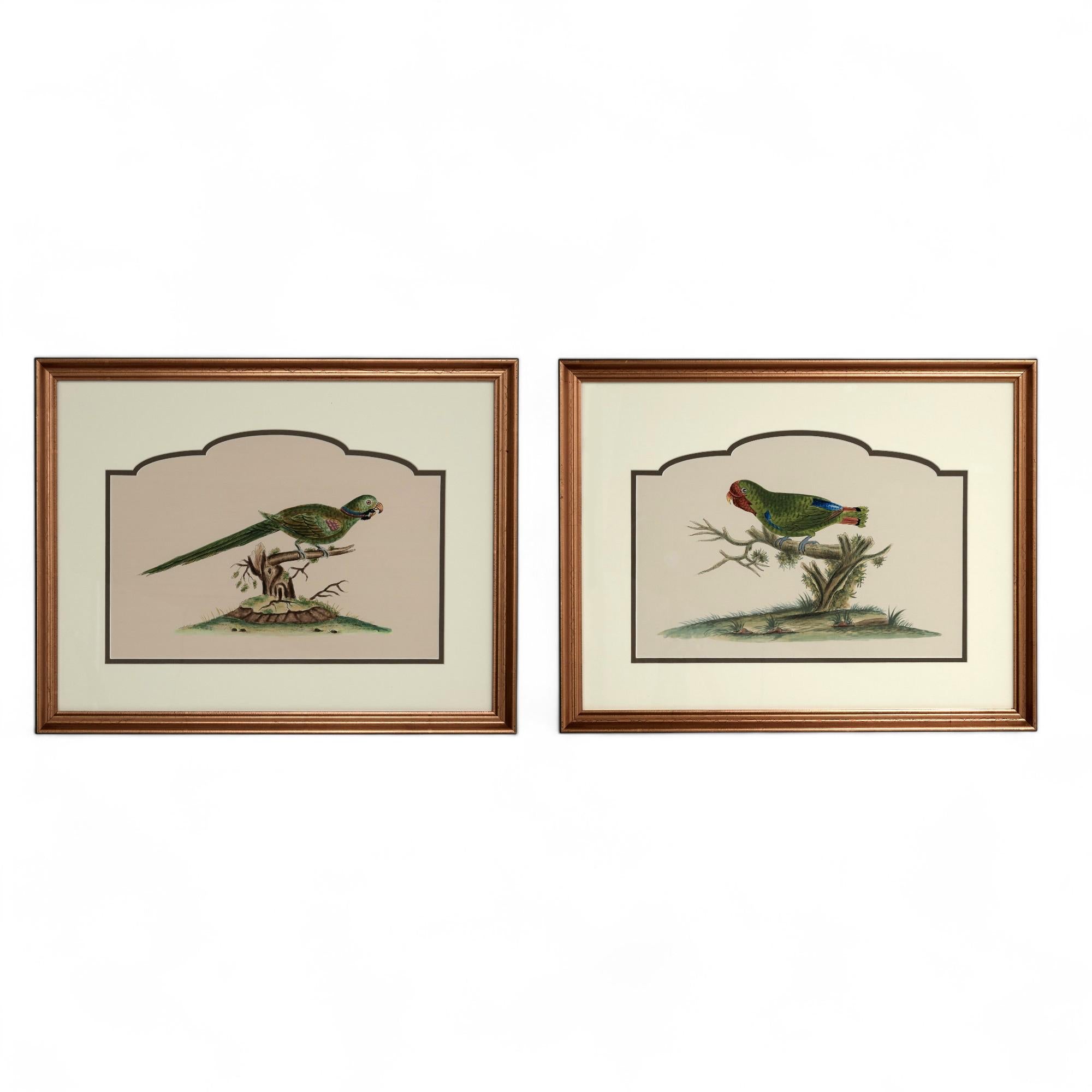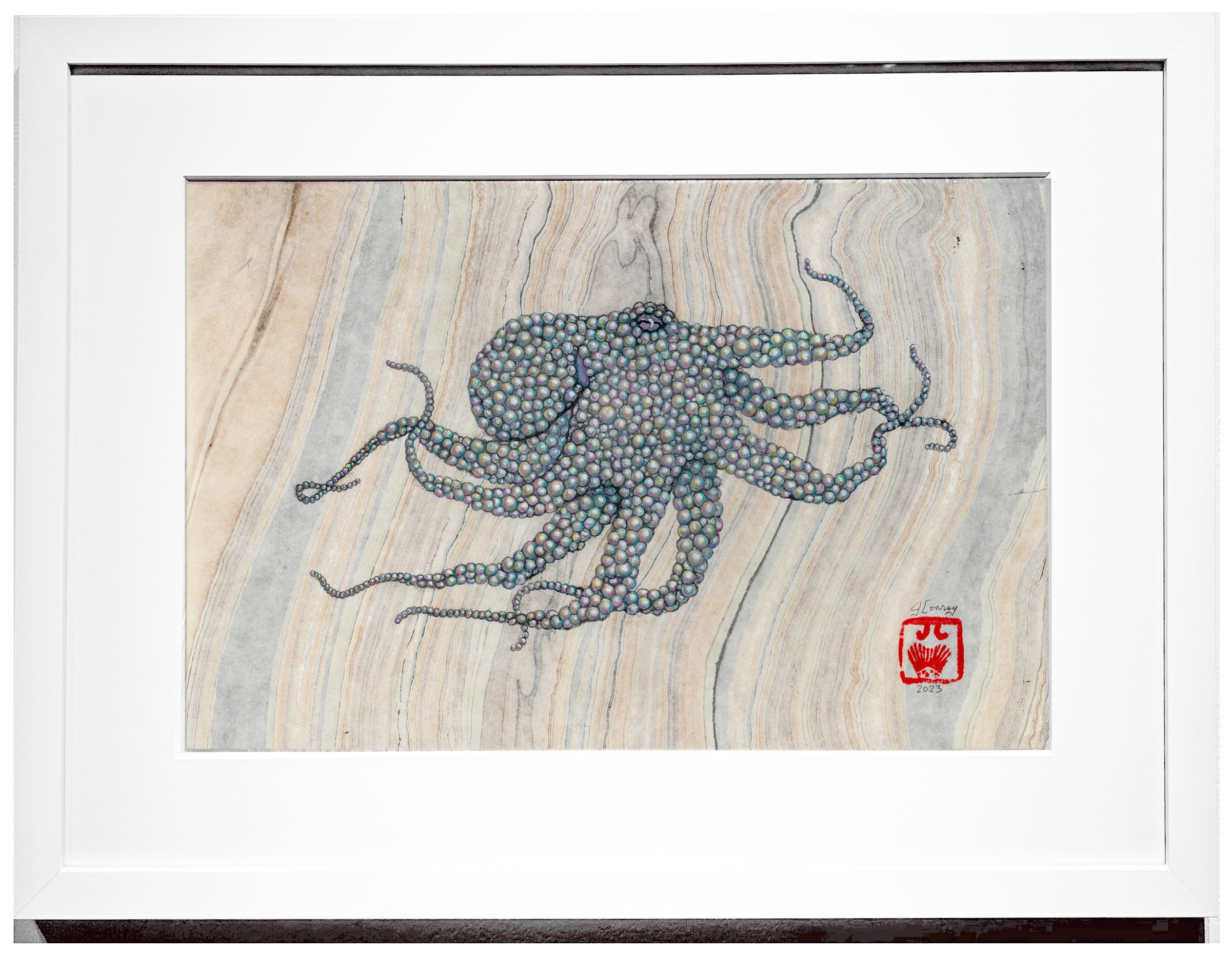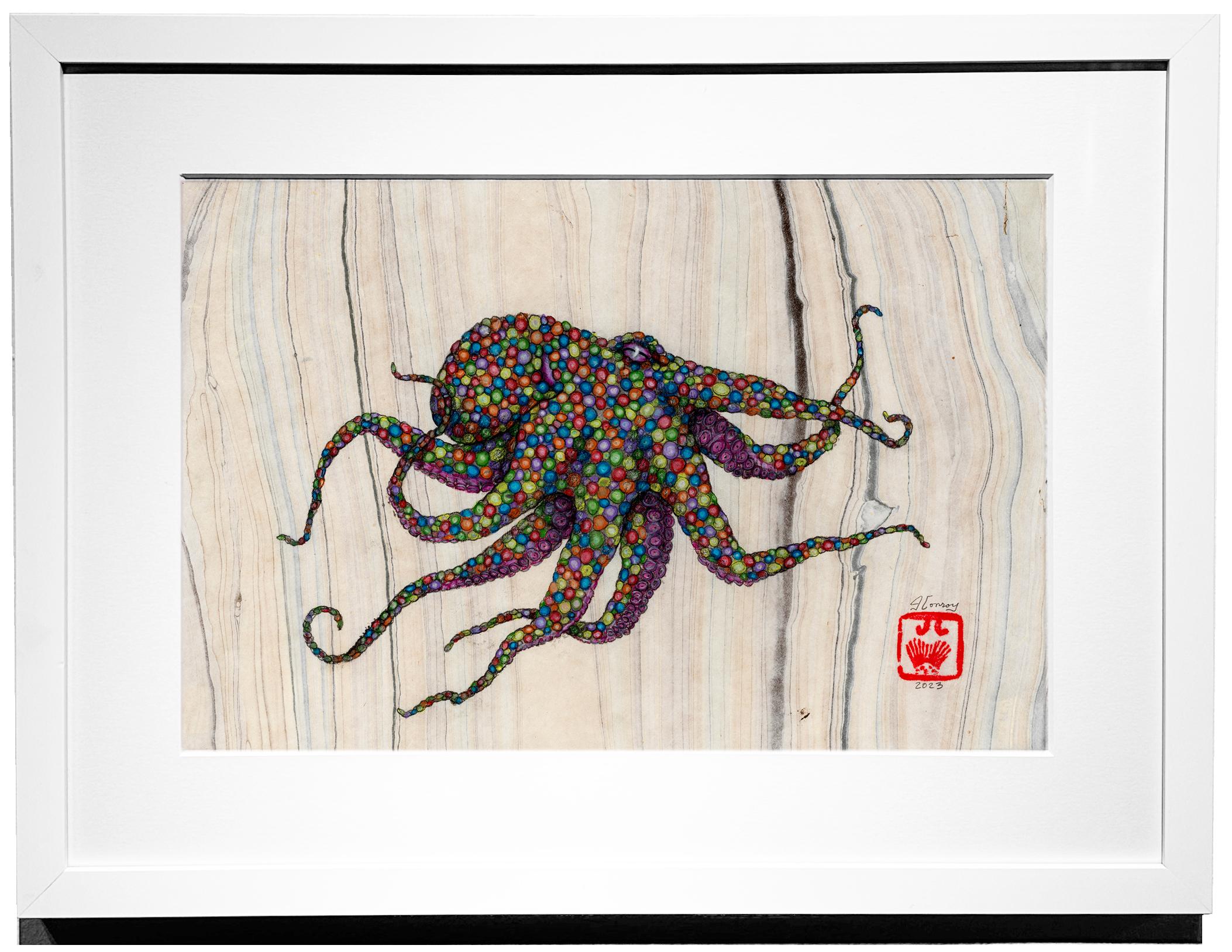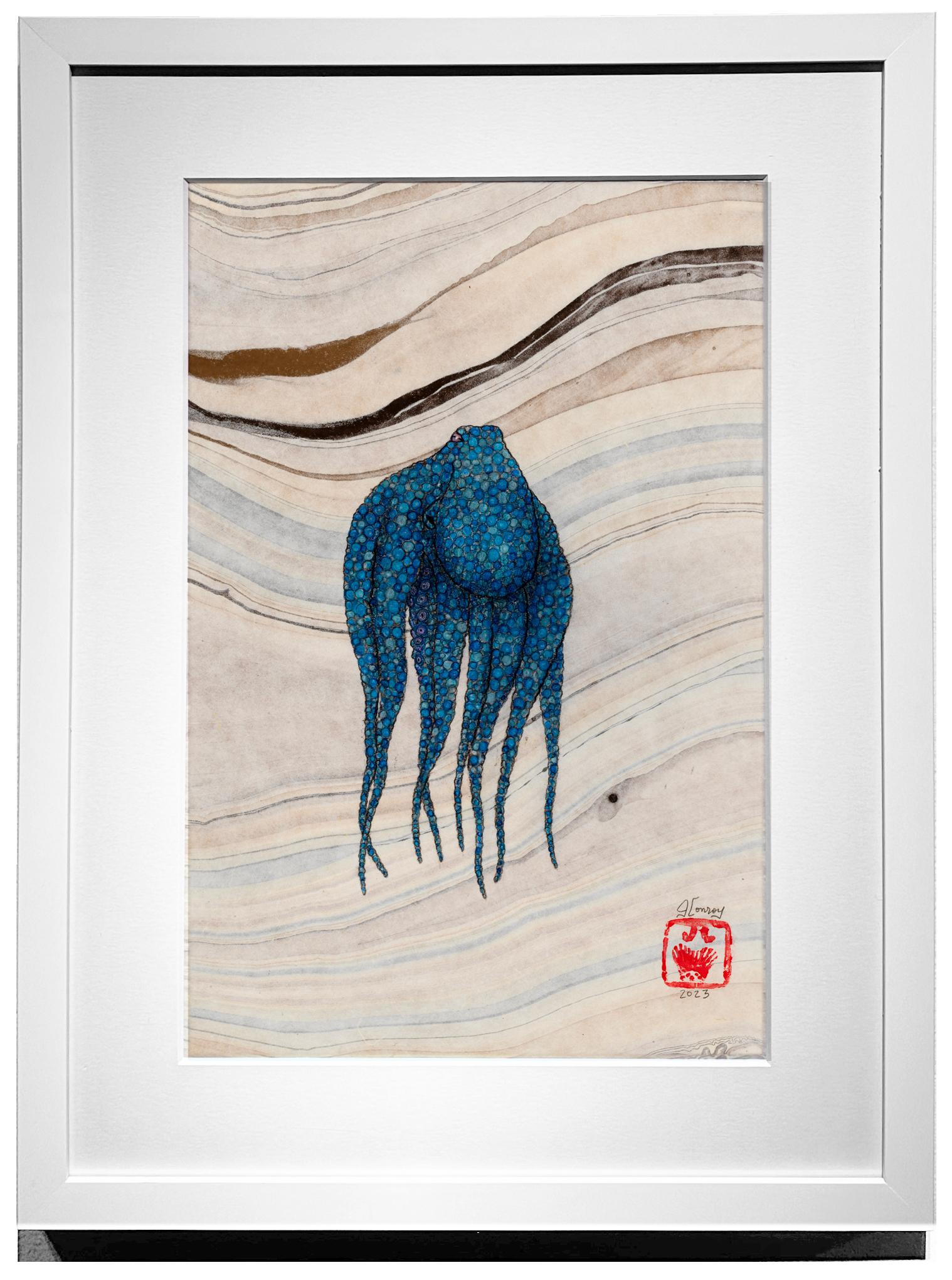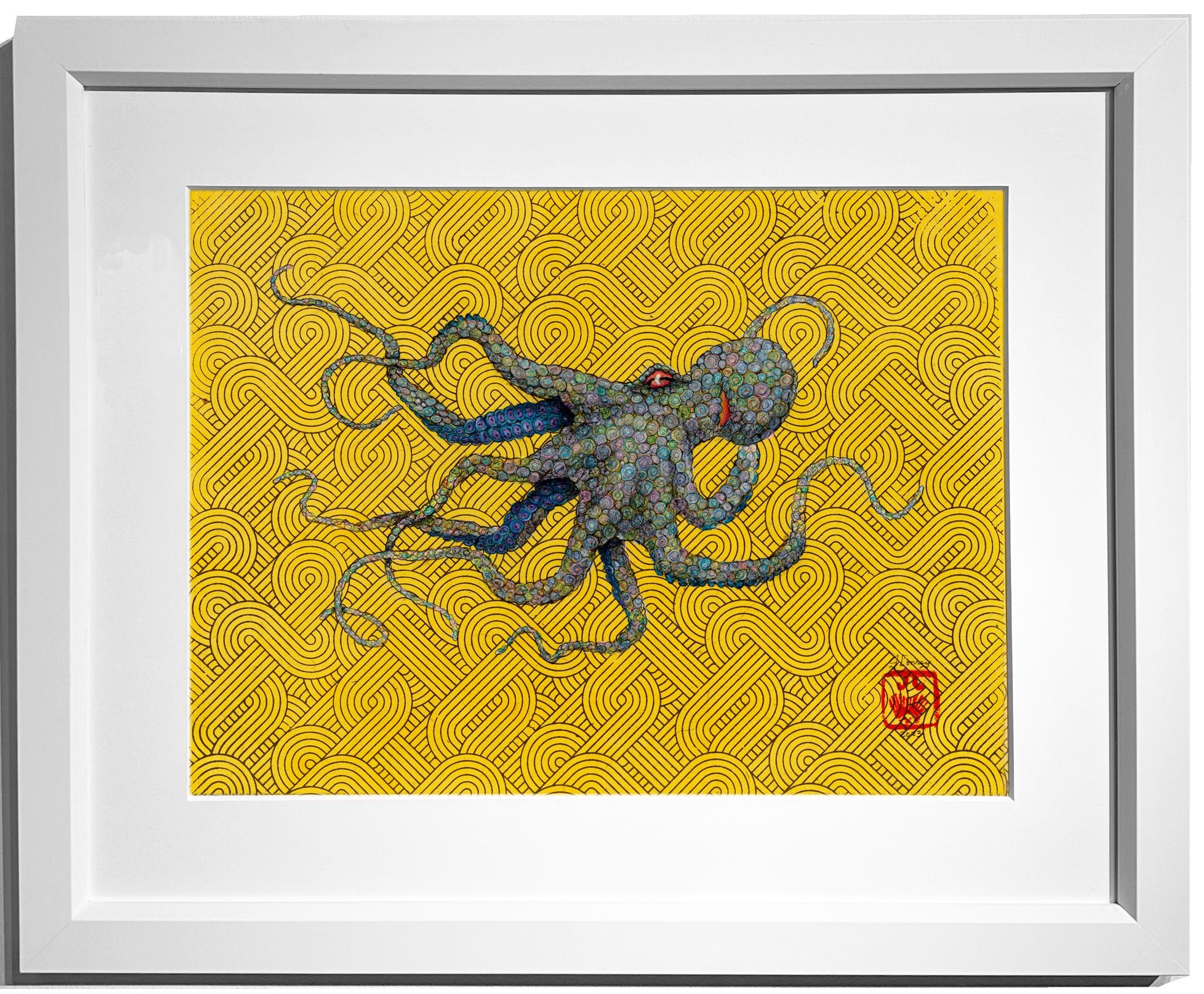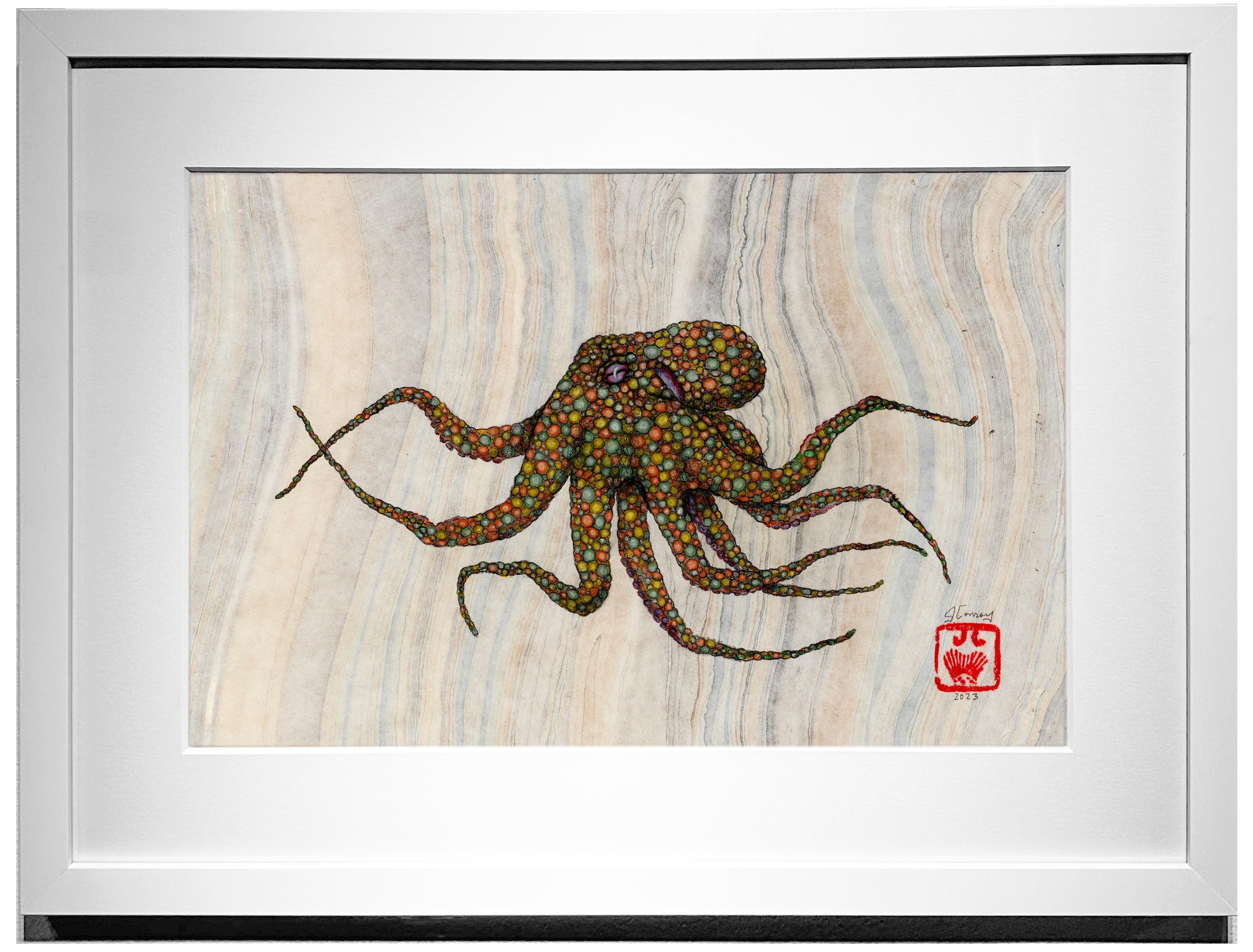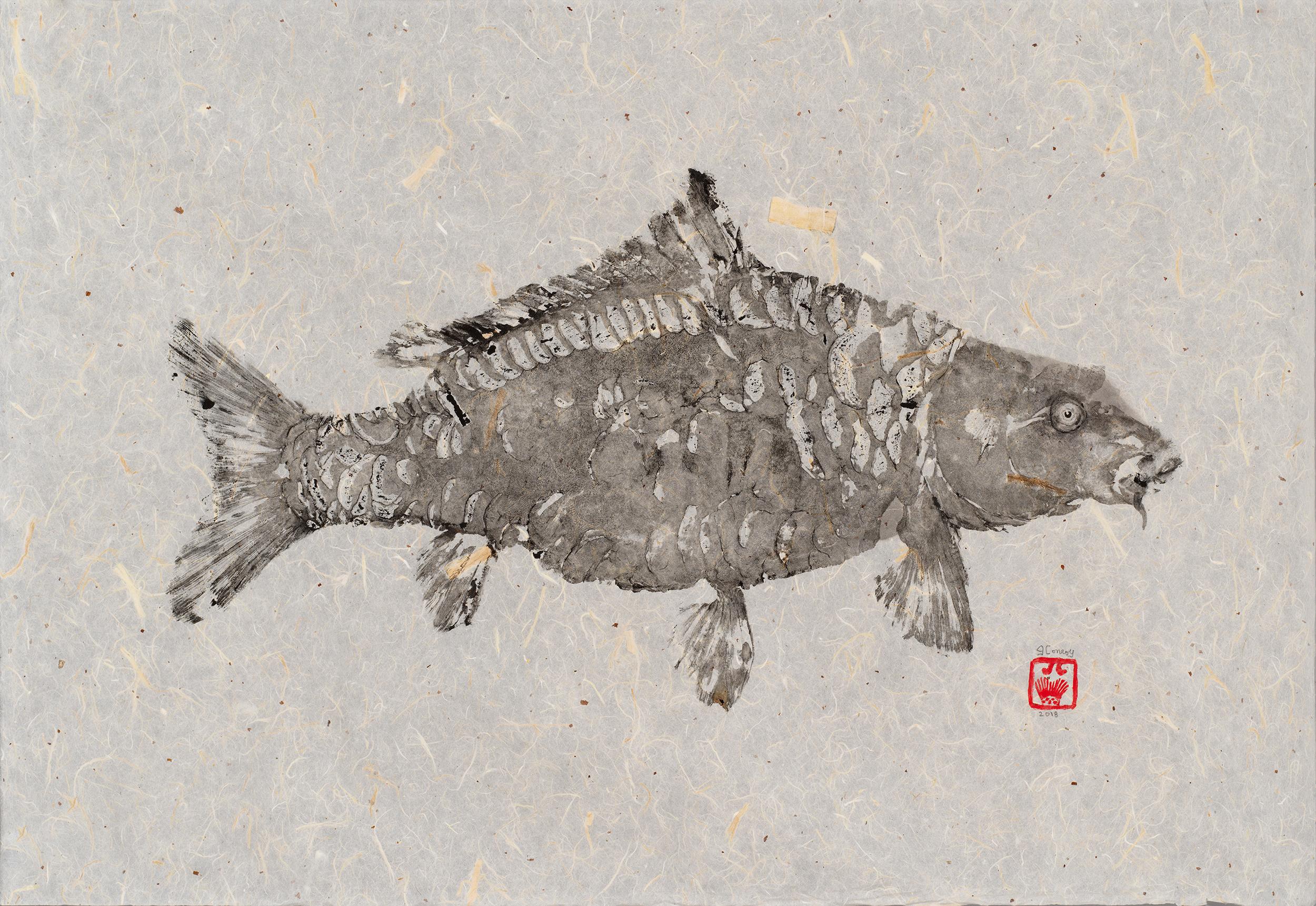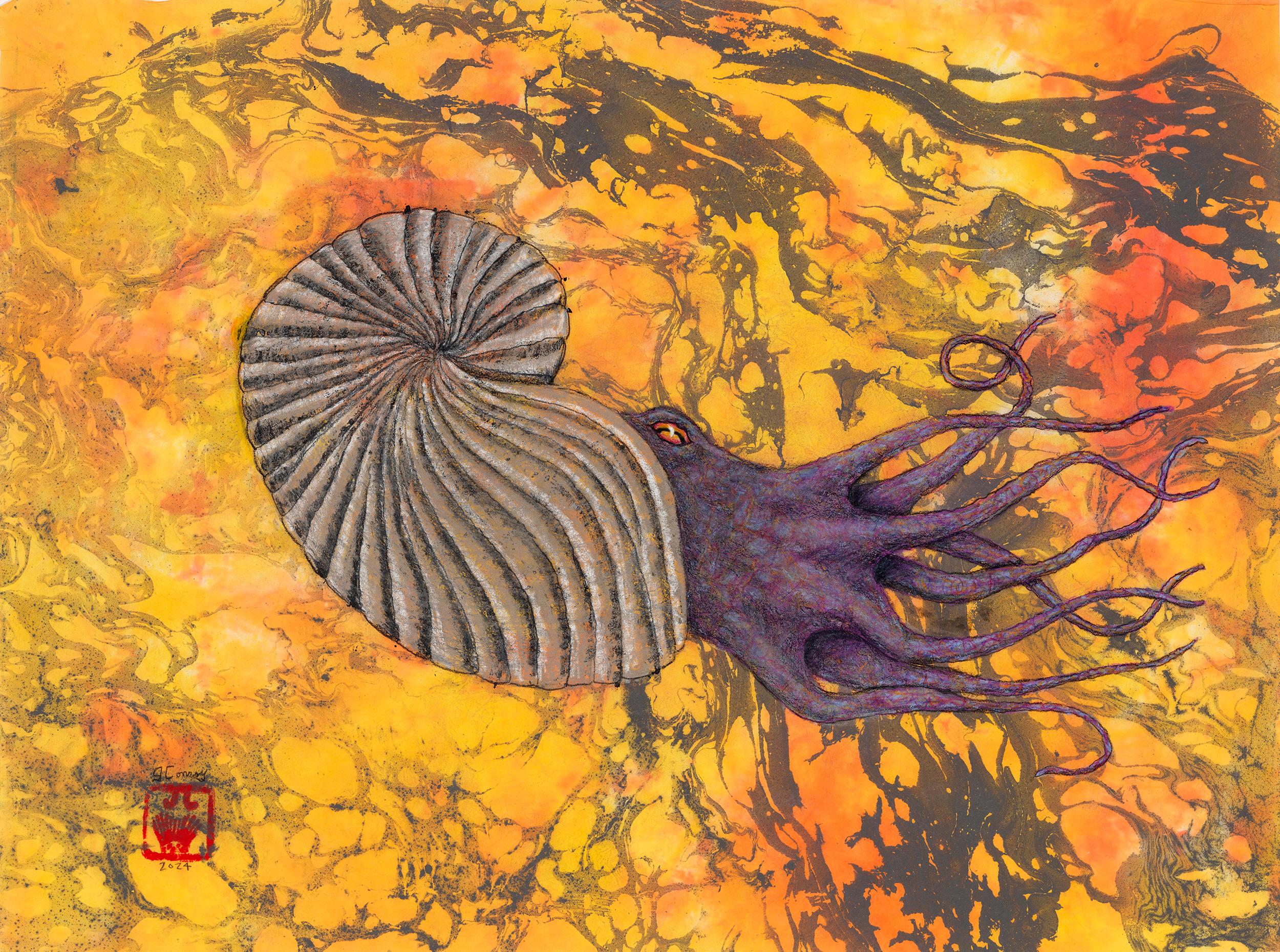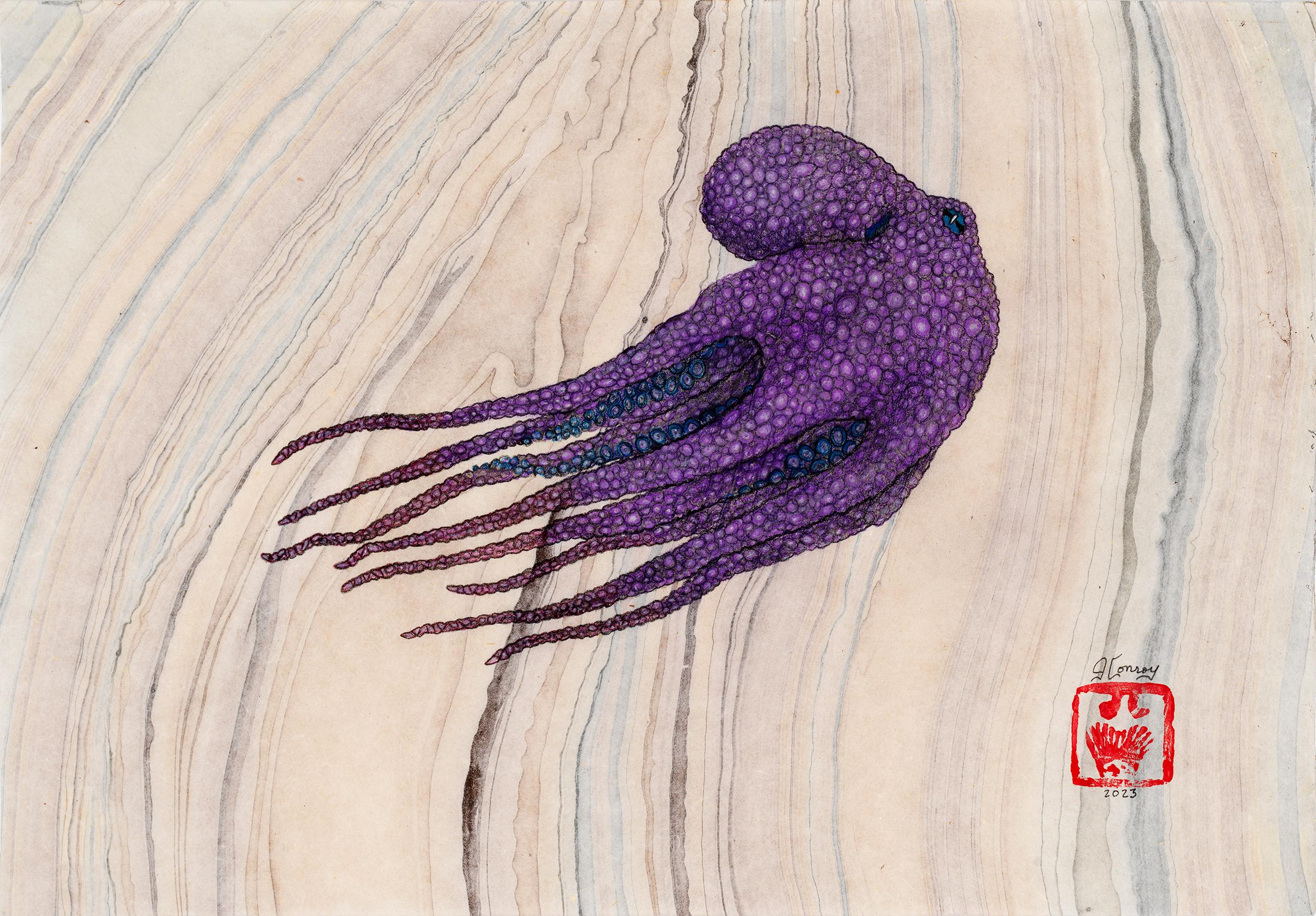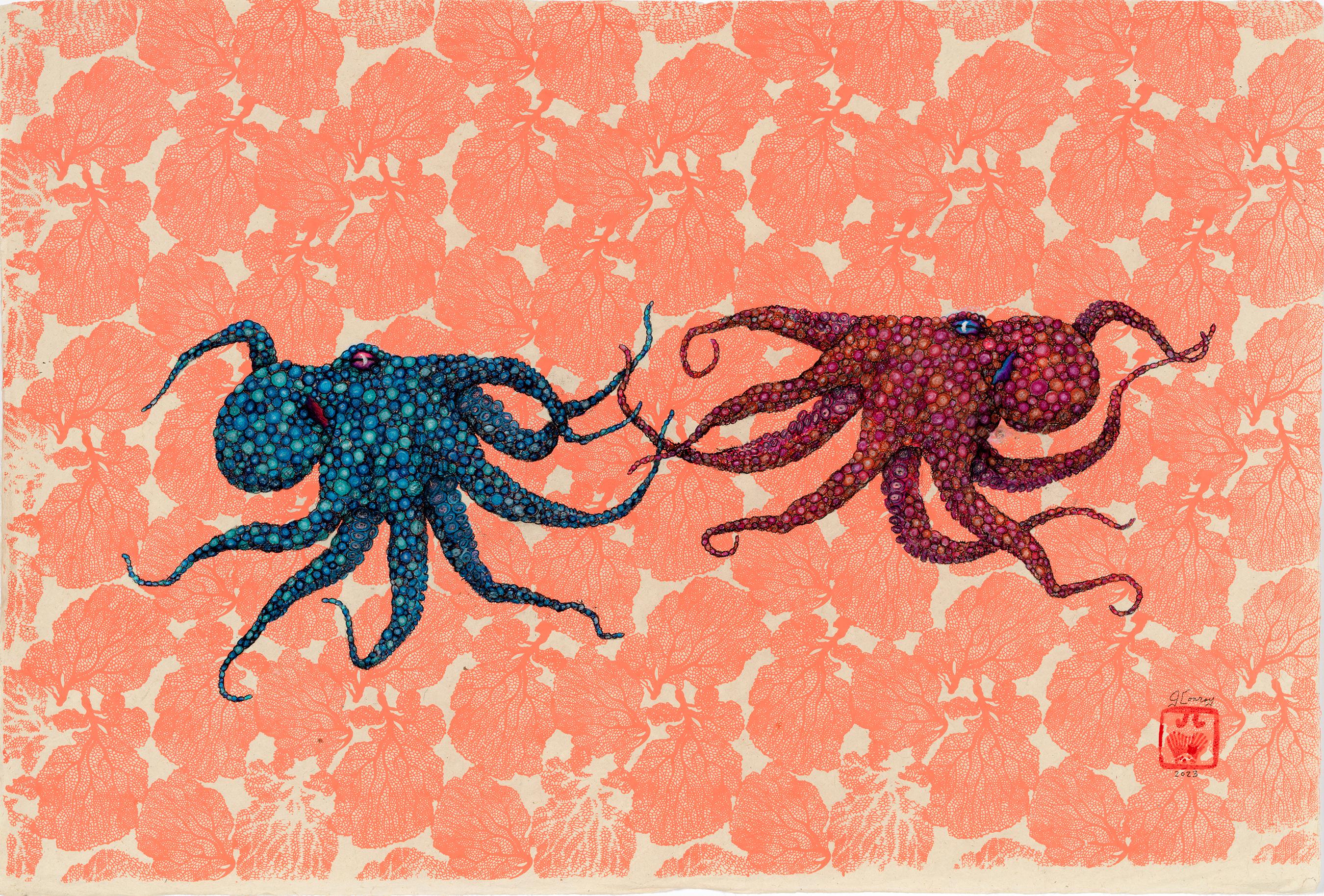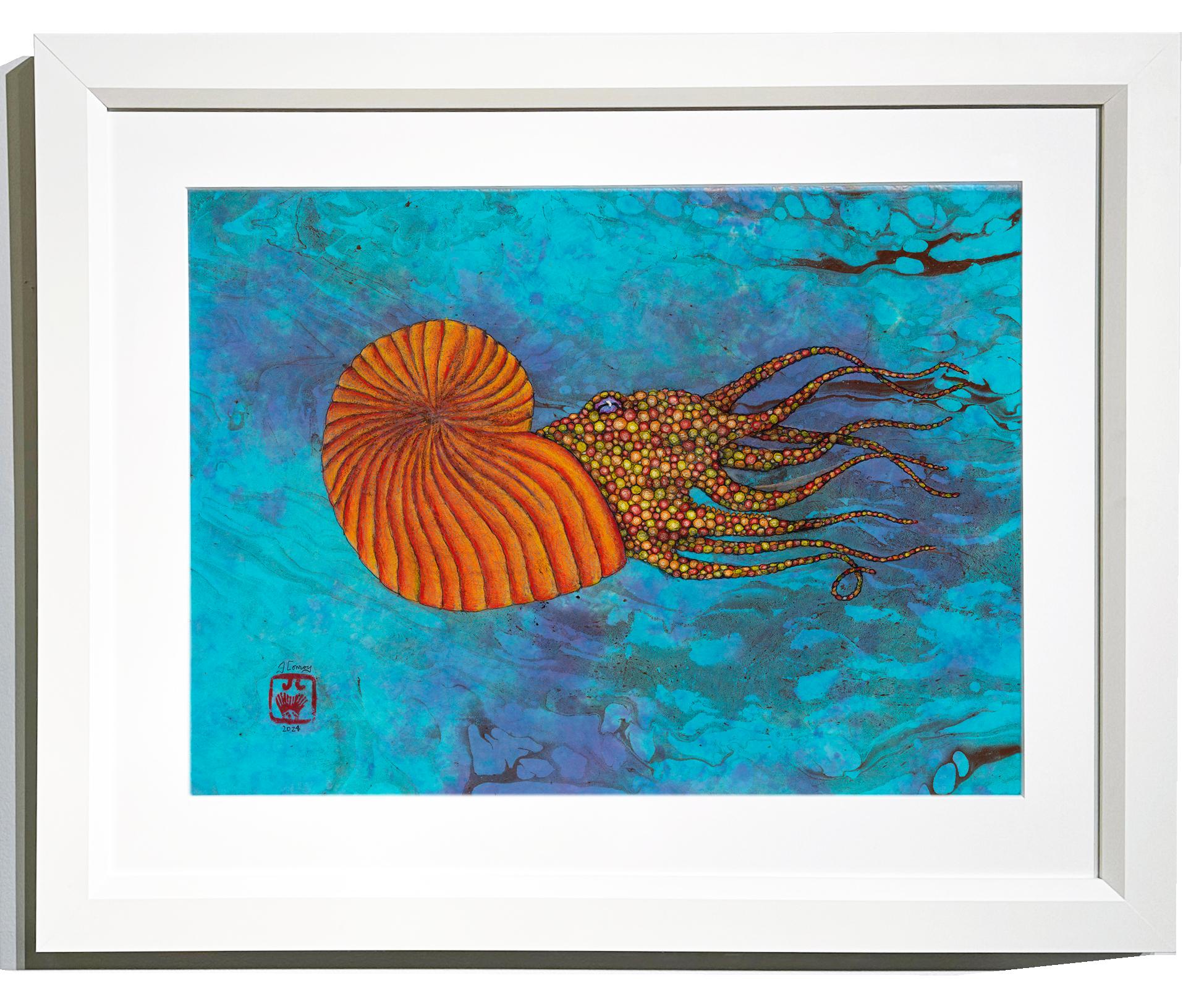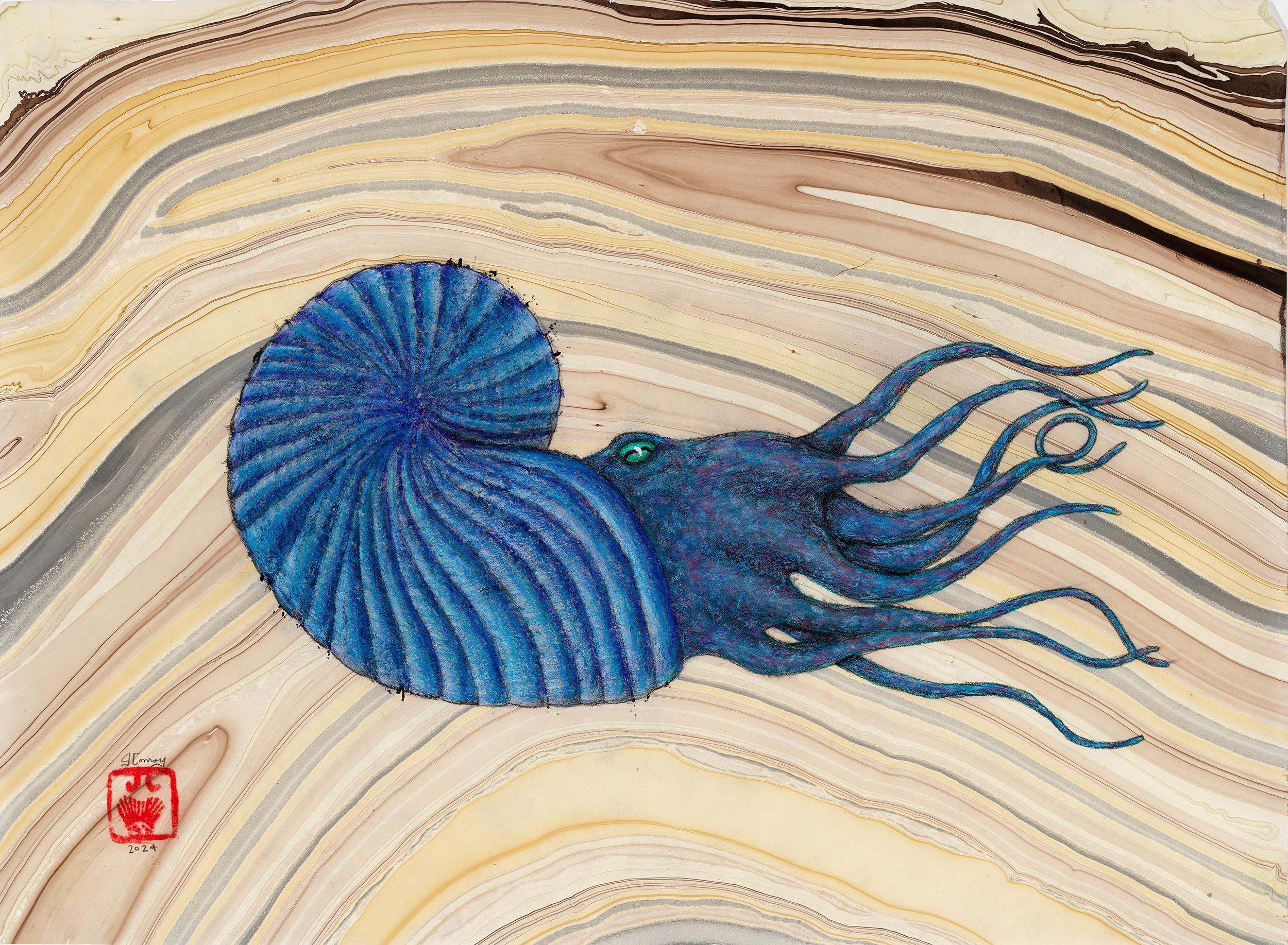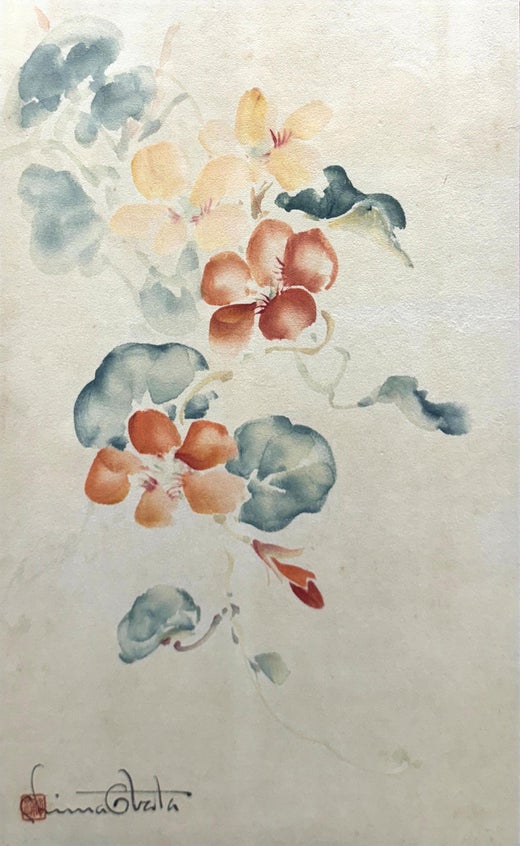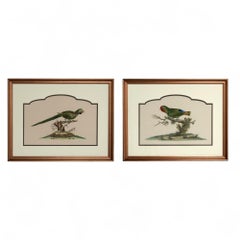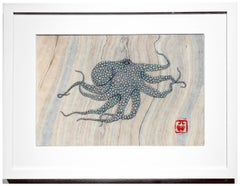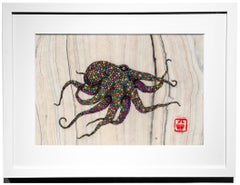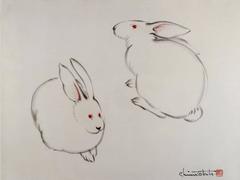
Sumi painting of rabbits by Chiura Obata
View Similar Items
1 of 5
Chiura ObataSumi painting of rabbits by Chiura Obatac1950s
c1950s
$4,500List Price
About the Item
- Creator:Chiura Obata (1885 - 1975, Japanese)
- Creation Year:c1950s
- Dimensions:Height: 18.25 in (46.36 cm)Width: 23.25 in (59.06 cm)Depth: 1 in (2.54 cm)
- Medium:
- Movement & Style:
- Period:
- Condition:
- Gallery Location:Oakland, CA
- Reference Number:1stDibs: LU4141152793
Chiura Obata
Chiura Obata ranks among the most significant California-based artists and Japanese American cultural leaders of the last century. Born in Okayama, Japan, Obata immigrated to San Francisco in 1903. By then, he was integrating Western practices into his art-making, and continued experimenting with new styles and methods throughout his seven-decade career. Today Obata is best known for majestic views of the American West, sketches based on hiking trips to capture what he called “Great Nature.” In 1903, Obata moved to San Francisco and began working as an illustrator for The New World and The Japanese American, two of the city's Japanese newspapers. He also did work as a commercial designer. Obata helped establish the East West Art Society in San Francisco in 1921, which sought to promote cross-cultural understanding through art. This goal was reflected in his embrace of the Nihonga style, which fused traditional Japanese sumi-e ink painting with the conventions of western naturalism. He spent much of the 1920s painting landscapes throughout California, and among his favorite subjects were mountain landscapes. In 1927, he visited Yosemite and the Sierra Nevada, creating over a hundred paintings and sketches of the high country. Obata stayed in the USA until the death of his father in 1928. In 1932 Obata Chiura returned to the U.S., and began work as an art instructor at the University of California, Berkeley. In April, 1942, Obata Chiura and his wife Haruko were among the more than 100,000 Japanese Americans who were moved from their homes along the West coast into ten relocation camps. He was first sent to Tanforan. In September, 1942, he was moved to the Topaz, Utah, internment camp. During his internment in different camps, the artist made about hundred sketches and paintings until his release in 1945. While confined at Topaz, he organized and acted as Director for the Topaz Art School for the 8,000 Japanese Americans in the camp. Obata's artwork from this time serves as a visual diary of the internees' daily life, and also as a powerful and lasting testament to the perseverance of the human spirit when confronted by prejudice. In 1943, he was released from Topaz, and moved with his family to St. Louis, where he found work with a commercial art company. When the military exclusion ban was lifted in 1945, he was reinstated to his position at the University of California, where he stayed until his retirement in 1954. Obata was a popular professor, and played a pivotal role in introducing Japanese art techniques and aesthetics that became one of the distinctive characteristics of the California Watercolor School. After his retirement he continued to paint, sketch and travel through the American countryside. In 1965 he received an order from the Japanese Emperor for promoting cultural exchange between the United States and Japan. A retrospective of his work was organized by the Smithsonian American Art Museum in 2019-2020.
Authenticity Guarantee
In the unlikely event there’s an issue with an item’s authenticity, contact us within 1 year for a full refund. DetailsMoney-Back Guarantee
If your item is not as described, is damaged in transit, or does not arrive, contact us within 7 days for a full refund. Details24-Hour Cancellation
You have a 24-hour grace period in which to reconsider your purchase, with no questions asked.Vetted Professional Sellers
Our world-class sellers must adhere to strict standards for service and quality, maintaining the integrity of our listings.Price-Match Guarantee
If you find that a seller listed the same item for a lower price elsewhere, we’ll match it.Trusted Global Delivery
Our best-in-class carrier network provides specialized shipping options worldwide, including custom delivery.You May Also Like
Vintage Pair of Ink and Watercolor Parrot Paintings
Located in Palm Beach, FL
Lofty pair of tropical parrot paintings on paper executed in a crisp and colorful ink and watercolor technique, inspired by early naturalist drawings. Presented under glass in gilt w...
Category
21st Century and Contemporary Naturalistic Animal Paintings
Materials
Ink, Watercolor
String of Pearls - Gyotaku Style Sumi Ink Painting of an Octopus, Framed
By Jeff Conroy
Located in Chicago, IL
A small octopus is inked in the Japanese style of Gyo-Taku print making. Using sumi ink to "print" the octopus, the artist then embellishes it with colored pencil to convey an extraordinary dimensionality. By printing it on hand-made Mulberry paper, in this case a paper that mimics the undulating patterns of water, the artist achieves a beautiful aesthetic. The artwork is matted and framed in a white wooden frame measuring 18.25h x 24.25w x 1d inches.
Jeff Conroy
String of Pearls
sumi ink and colored pencil on mulberry paper
12.50h x 18.50w in
31.75h x 46.99w cm
JEC126
Gyotaku - A Japanese word translated from "gyo" meaning fish and "taku" meaning stone impression and is believed to get its inspiration from Chinese stone...
Category
21st Century and Contemporary Contemporary Animal Drawings and Watercolors
Materials
Sumi Ink, Watercolor, Mulberry Paper, Color Pencil
Silly Rabbit, Trix are for Kids - Gyotaku Style Sumi Ink Painting of an Octopus
By Jeff Conroy
Located in Chicago, IL
A small octopus is inked in the Japanese style of Gyo-Taku print making. Using sumi ink to "print" the octopus, the artist then embellishes it with colored pencil to convey an extra...
Category
21st Century and Contemporary Contemporary Animal Drawings and Watercolors
Materials
Sumi Ink, Watercolor, Mulberry Paper, Color Pencil
Fontainebleau - Gyotaku Style Sumi Ink Painting of a Multi-Colored Octopus
By Jeff Conroy
Located in Chicago, IL
A small octopus is inked in the Japanese style of Gyo-Taku print making. Using sumi ink to "print" the octopus, the artist then embellishes it with colored pencil to convey an extraordinary dimensionality. By printing it on Mulberry paper, which mimics the swirl of water, the artist achieves a beautiful aesthetic. The artwork is matted and framed in a simple white wooden frame measuring 24.25h x 18.25w x 1d inches.
Jeff Conroy
Fontainebleau
sumi ink and colored pencil on mulberry paper
12.50h x 18.25w in
31.75h x 46.35w cm
JEC120
Gyotaku - A Japanese word translated from "gyo" meaning fish and "taku" meaning stone impression and is believed to get its inspiration from Chinese stone rubbings...
Category
21st Century and Contemporary Contemporary Animal Drawings and Watercolors
Materials
Sumi Ink, Color Pencil, Mulberry Paper, Watercolor
Goldilocks, Pastel - Gyotaku Style Sumi Ink Painting of an Octopus
By Jeff Conroy
Located in Chicago, IL
A small octopus is inked in the Japanese style of Gyotaku print making. Using sumi ink to "print" the octopus, the artist then embellishes it with colored pe...
Category
21st Century and Contemporary Contemporary Animal Drawings and Watercolors
Materials
Sumi Ink, Watercolor, Mulberry Paper, Color Pencil
70's Kitchen - Gyotaku Style Sumi Ink Painting of an Octopus on Mulberry Paper
By Jeff Conroy
Located in Chicago, IL
Those of us of a certain age can't forget the color palette of the 70's - avocado green, burnt orange, and brown - lots of brown! Here, artist Jeff Conroy takes those fond memories of his childhood and brings them to life in this small octopus Gyotaku ink print. Using sumi ink to "print" the octopus, the artist then embellishes it with colored pencil to convey an extraordinary dimensionality. By printing it on hand-made Mulberry paper, in this case a paper that mimics the movement of water in subtle shades of brown, the artist achieves a beautiful aesthetic. The artwork is matted and framed in a simple white wooden frame measuring 18.25h x 24.25w x 1d inches.
Jeff Conroy
70s Kitchen...
Category
21st Century and Contemporary Contemporary Animal Drawings and Watercolors
Materials
Sumi Ink, Watercolor, Mulberry Paper, Color Pencil
Recently Viewed
View AllMore Ways To Browse
Two Horse Paintings
Portrait Of Dog
Dog Oil Paintings
The Hunt Oil Paintings
Black And White Animal Paintings
Large Horse Painting
New Orleans Sculpture
White Horse Painting
Oil Painting Of Cat
Red Bird Painting
Butterfly Sculpture
Butterfly Oil Paintings
Original Wildlife Paintings
Black Cat Painting
Horse Oil Paintings Antique
Antique Oil Painting Horse Paintings
Bunny Painting
Tropical Landscape Painting
